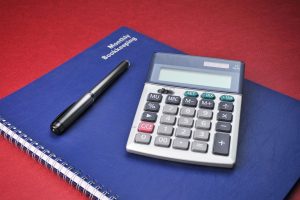
Therefore, existing capital leases under ASC 840 do not require adjustment or remeasurement upon transition to ASC 842, provided they were accounted for correctly under ASC 840. Based on these circumstances, the present value of 4 annual payments of $20,000, made in advance, with a 3% IBR is $76,572. Accounting For Architects The annual operating lease expense is $20,000, or the straight-line treatment of 4 annual payments with no escalations, rent holidays, etc.
- Lease incentives, often provided by lessors to encourage lease agreements, can significantly influence financial dynamics.
- Traditional lease accounting standards changed several years ago with the adoption of Accounting Standards Codification (ASC) 842 for US GAAP companies and IFRS 16 for companies that report using IFRS.
- If the implicit rate is not identifiable, the lessee’s incremental borrowing rate is used.
- These modifications necessitate a re-evaluation of both the lease liability and the right-of-use asset, often resulting in adjustments to the balance sheet.
- Companies must implement robust processes and systems to track changes and update financial records accordingly.
Accounting Strategies for Cannabis Business Success

That way, you’ll be an expert when colleagues request information about leases and their financial impact on the company. Under Topic 840, a leveraged lease is defined as an agreement in which the lessor borrows funds from a lender to help pay for the purchase of an asset that is then leased to a lessee. The lender holds the title of the asset and the lease payments made by the lessee may be collected by the lessor, but are sent to the lender. Sales-type lease accounting occurs when the lease arrangement effectively transfers control of the underlying asset from the lessor to the lessee, which is considered akin to a sale. Under ASC 842, a lease is classified as a sales-type lease if it meets any of the above criteria.

1.3 Lessee accounting – Classification (ASC 842 and IFRS
Please review the Program Policies page for more details on refunds and deferrals. Our platform features short, highly produced videos of HBS faculty and guest business experts, interactive graphs and exercises, cold calls to keep you engaged, and opportunities to contribute to a vibrant online community. We offer self-paced programs (with weekly deadlines) on the HBS Online course platform.

Lease Accounting Explained
For cash flow statements, lease payments are typically classified as financing activities, altering the perception of operating cash flows and necessitating careful consideration by analysts and investors. Lease accounting helps prevent off-balance-sheet financing, where companies could previously “hide” significant liabilities, primarily related to operating leases. New accounting standards require most leases to be recognized on the balance sheet, making financial reporting more transparent.

Another important point to bring up is that IFRS allows companies to recognize interest expense on the cash flow statement in either operating activities or financing activities. Because finance leases have an interest component under both IFRS and US petty cash GAAP, otherwise similar companies may report interest expense in different parts of the cash flow statement. Having said that, under IFRS there is a single lease accounting method for lessees, so these conditions are more relevant for US GAAP, which clearly differentiates finance leases and operating leases. The modification process begins by determining if the changes constitute a separate lease. If the modification adds the right to use additional assets and lease payments increase accordingly, it is treated as a separate lease.

- Updates to your application and enrollment status will be shown on your account page.
- We accept payments via credit card, wire transfer, Western Union, and (when available) bank loan.
- For lessees, ASC 842 classifies every lease as either an operating lease or a finance lease.
- Our platform features short, highly produced videos of HBS faculty and guest business experts, interactive graphs and exercises, cold calls to keep you engaged, and opportunities to contribute to a vibrant online community.
- The initial measurement of lease liability is a foundational step in lease accounting, determining the present value of lease payments that are not yet paid.
- This recalibration impacts both the lease liability and the right-of-use asset, necessitating precise adjustments in financial records.
With finance leases, the expense of leased assets is split into a depreciation component and an interest component. This single lease classification under IFRS means companies are easily comparable. The FASB’s lease accounting standard change, ASC 842, presents dramatic changes to lease accounting the balance sheets of lessees.
- They should instead recognize lease expense on a straight-line basis, generally, over the term of the lease, similar to the accounting treatment under ASC 840.
- This expense, combined with interest on the lease liability, creates a dual impact on the financials.
- Another disadvantage of leasing is that lease accounting can be quite complex… much more so compared to building and owning the asset outright.
- The cash entry would not be required at this point, but at the end of the year upon payment.
- Determining the right-of-use (ROU) asset involves integrating several lease-related components for accurate representation on the balance sheet.
The interest income is calculated on the net investment in the lease, reflecting the lessor’s rate of return on the lease agreement. This ensures the revenue is matched with the periods benefiting from the lease, providing a more accurate financial picture of the lessor’s leasing activities. ASC 842, also known as Topic 842, is the new FASB lease accounting standard and dictates how organizations reporting under US GAAP should record the financial impact of their leases. Among other changes, the new standard requires organizations to record the majority of their leases on the balance sheet. ASC 842 replaced the prior lease accounting standard, ASC 840, and was instituted by FASB to enhance transparency into lease liabilities for financial investors and reduce off-balance sheet financing.
